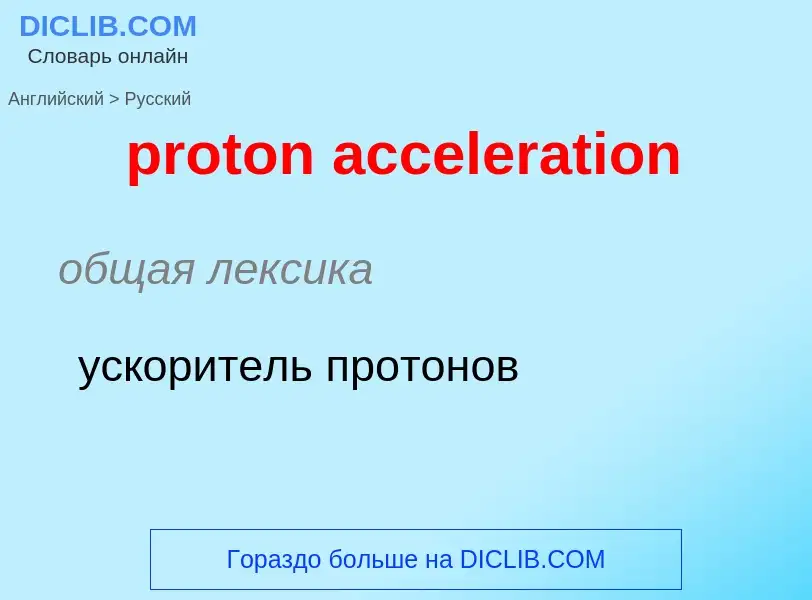Traducción y análisis de palabras por inteligencia artificial ChatGPT
En esta página puede obtener un análisis detallado de una palabra o frase, producido utilizando la mejor tecnología de inteligencia artificial hasta la fecha:
- cómo se usa la palabra
- frecuencia de uso
- se utiliza con más frecuencia en el habla oral o escrita
- opciones de traducción
- ejemplos de uso (varias frases con traducción)
- etimología
proton acceleration - traducción al ruso
общая лексика
ускоритель протонов
общая лексика
протон-протонная реакция
медицина
протонная терапия
Definición
Wikipedia

The AWAKE (Advanced WAKEfield Experiment) facility at CERN is a proof-of-principle experiment, which investigates wakefield plasma acceleration using a proton bunch as a driver, a world-wide first. It aims to accelerate a low-energy witness bunch of electrons from 15 to 20 MeV to several GeV over a short distance (10 m) by creating a high acceleration gradient of several GV/m. Particle accelerators currently in use, like CERN's LHC, use standard or superconductive RF-cavities for acceleration, but they are limited to an acceleration gradient in the order of 100 MV/m.
Circular accelerator machines are not efficient for transporting electrons at high energy due to the large energy loss in synchrotron radiation. Linear accelerators do not have this issue and are therefore better suited for accelerating and transporting electrons at high energies.
AWAKE's high acceleration gradient will allow the construction of a new generation of shorter and less expensive high energy accelerators, representing a big step in the particle accelerators technology, especially for linear electron accelerators.



![[[Electron]] source and beamline [[Electron]] source and beamline](https://commons.wikimedia.org/wiki/Special:FilePath/Electron source and beamline installation.png?width=200)
![plasma]] wakefield (blue waves) plasma]] wakefield (blue waves)](https://commons.wikimedia.org/wiki/Special:FilePath/Interaction proton-wakefield.png?width=200)

![Irradiation of [[nasopharyngeal carcinoma]] by photon (X-ray) therapy (left) and proton therapy (right) Irradiation of [[nasopharyngeal carcinoma]] by photon (X-ray) therapy (left) and proton therapy (right)](https://commons.wikimedia.org/wiki/Special:FilePath/Comparison of dose distributions between IMPT (right) and IMRT (left).jpg?width=200)
![Control panel of the [[synchrocyclotron]] at the [[Orsay]] proton therapy center, France Control panel of the [[synchrocyclotron]] at the [[Orsay]] proton therapy center, France](https://commons.wikimedia.org/wiki/Special:FilePath/Orsay proton therapy dsc04460.jpg?width=200)
![[[Prince Charles]] and Dr. Yen-Ching Chang at the [[University College London Hospitals NHS Foundation Trust]] proton centre opening ceremony [[Prince Charles]] and Dr. Yen-Ching Chang at the [[University College London Hospitals NHS Foundation Trust]] proton centre opening ceremony](https://commons.wikimedia.org/wiki/Special:FilePath/Prince Charles and Dr. Yen-Ching Chang at UCLH.jpg?width=200)
